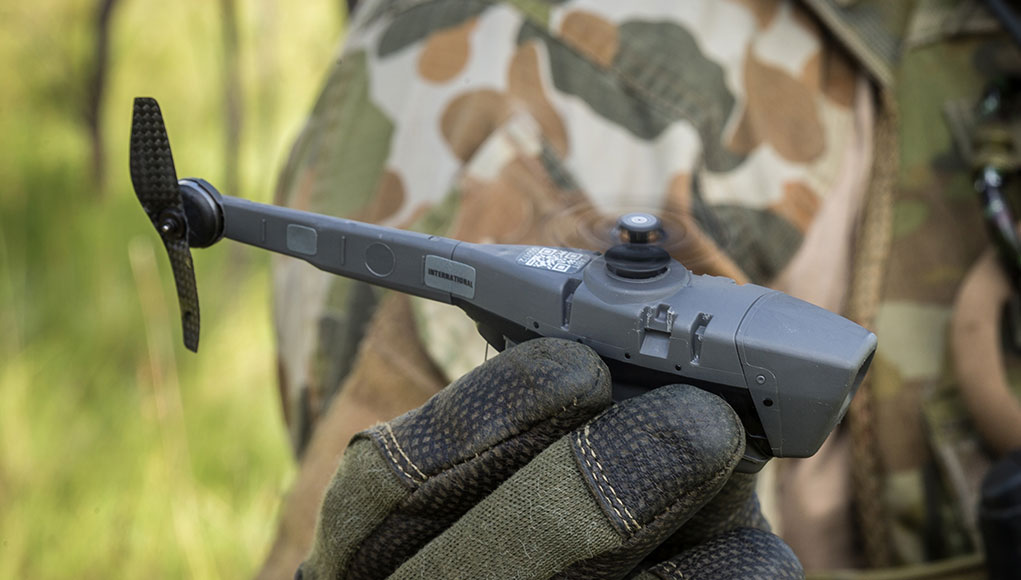Here:
EGLIN AIR FORCE BASE, Fla. — Thanks to a recent innovative idea, the 96th Test Wing’s support and defense unit became its latest developmental test squadron.

The 96th Security Forces Squadron Airmen began using a new communication system in their patrol cars called the Android Tactical Assault Kit (ATAK) in June. The squadron is the first large security forces unit to use the system solely for a base defense mission. Word spread fast across defense channels about the capabilities and its ease of use. Soon, the 96th SFS became the testing area for what could become a new Air Force-wide base defense communication platform.
The Air Force Research Lab-created system, which operates on electronic tablets, delivers real-time visual communication and mapping that provides defenders almost immediate situational awareness. This instant information is available to defenders on patrol, at an emergency or at the command and control hub, known as the base defense operations center.
The ATAK works via cellular communication, GPS and a base network, managed by the AFRL, which acts as a hub linking the patrols and BDOC. Non-ATAK functions, like vehicle and license check information, work virtually like a phone app.

Of course, there was some apprehension from the defenders with new technology changing the tried-and-true manual processes, but it did not last long, according to Staff Sgt. Christopher Farrell, the NCO in charge of the tablet implementation.
“Once they saw the benefits out in the field, all of the feedback was positive,” he said.
There are three areas the new tablet system greatly improved the way 96th SFS completes its mission so far.
1. With the tablet, patrol units now have access to the electronic license and vehicle information system within their car. Prior to the device, Airmen would radio into BDOC to get this information during a traffic stop. The information retrieval would involve at least two people, vocal communication and hand-written recording of the needed data. Now, it takes a few key strokes and a good cellular signal.
2. The tablets are linked to GPS. This gives BDOC instant awareness of where the patrol vehicles are at all times. Prior to this, radio communication would be required to locate a specific patrol car. The GPS is also vital in emergency situations, because the BDOC controllers can instantly see patrols in the area and dispatch them to the location.
3. The ATAK system eliminates large amounts of radio communication as well as the amount of information passed via radio. It significantly improves how quickly and effectively the BDOC dispatchers provide information to defender patrols.
Previously, in the event of an emergency, the affected area would be plotted on a large (white board) map in the BDOC. Location information and directives would be written out on the map. Then, the BDOC dispatcher would relay that information to each individual patrol car via radio. The defenders in the vehicles would then have to write down the radioed information or remember it as they moved into the emergency scene.
With ATAK, once the area is digitally plotted, a process much quicker than hand-drawn, a map of the location, positions and directives can be sent to all patrols simultaneously. This eliminates continuous radio traffic and provides a visual and written component unavailable until now.
A secondary benefit is defenders can take photos with the tablet and send them to BDOC and other patrols to provide instant situational awareness. This proves useful on shifting patrols and critical in accident and suspicious package incidents.
These are the areas of effectiveness revealed in only a few months. New areas of implementation and ways the tablet can be used are being discovered with regularity, according to Farrell.
“The more training they have with the tablet, the more uses we find for it,” he said.
The idea began much smaller with a funding request to put tablets with access to the license and vehicle information system in patrol vehicles. The request was routed and eventually paid for through the 96th TW’s new innovation division and the leadership panel that reviews each idea.
The idea was approved with a caveat for the defenders to look into ATAK. With the discovery of that system’s capabilities, the initial small idea blossomed into a completely new, faster and more accurate communication system for Eglin’s security forces.
“(Without the innovation process) security forces wouldn’t be testing this capability for possibly the rest of the Air Force,” said Capt. Chandler Harms, 96th SFS and the project’s initiator. “Without the conversation (about ATAK) we’d still be operating the same way we did since the 90s.”


